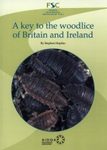![Termites & Mites Termites & Mites]()
Click to have a closer look
About this book
Contents
Customer reviews
Related titles
About this book
Termites are believed to be the oldest eusocial insects and their morpho-physiologically distinct castes are called reproductives, workers, soldiers and immature forms. Termites are called xylophages or wood-decaying insects but can also feed on a variety of organic materials, including grasses, litter, humus, and components of the soil, such as hydrolysable peptides and polyphenolic compounds. These specialized feeding habits of termites are linked to their digestive apparatus and allow them to act as primary consumers and decomposers (herbivores and detritivores). In Termites & Mites, chapter one discusses the connections between digestive processes of termites and their feeding habits and ecological role. In chapter two, the functional morphology of the digestive tube of ten species belonging to seven genera of neotropical Termitinae is analyzed, with the aim of characterizing and comparing the configuration of individuals from different castes. The final chapter in Termites & Mites discusses the physical phenomenon which causes the absence of mites at high altitudes in Europe. The aim of studies conducted in chapter three, is to systematically review the relationship between allergen exposure in Europe and altitude-related characteristics.
Contents
Preface pp. vii-x
Chapter 1. An Overview on the Interface Between Feeding Habits, Ecological Role and Digestive Processes of Termites
(Thâmarah A. Lima, Leonardo P. Dornelles, Ana Patrícia S. Oliveira, Thiago H. Napoleão and Patrícia M.G. Paiva, Departamento de Bioquímica, Centro de Ciências Biológicas, Universidade Federal de Pernambuco, Cidade Universitária, Recife, Pernambuco, Brazil)
pp. 1-34
Chapter 2. Social Polymorphism and Gut Desing in "Higher Termites": A Case Study in Neotropical Termitinae
(María Celina Godoy, Facultad de Ciencias Exactas y Naturales y Agrimensura (Universidad Nacional del Nordeste), Corrientes, Argentina)
pp. 35-74
Chapter 3. House Dust Mites and Altitude
(Frank van Boven, Working Group on Allergen Avoidance, V&VN Lung Care Nurses, V&VN Dutch Nurses’ Association, Utrecht, The Netherlands)
pp. 75-90
Index pp. 91-98
Customer Reviews



































